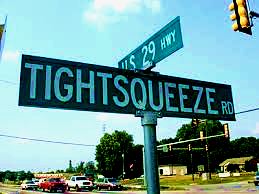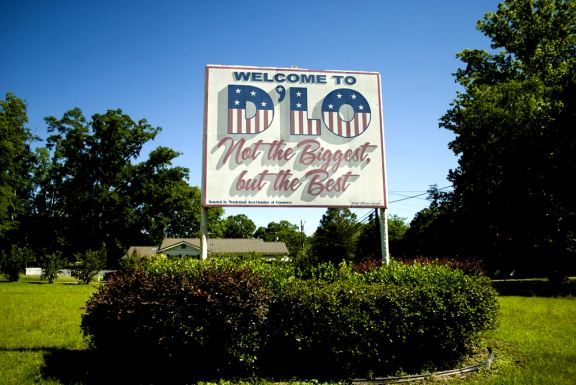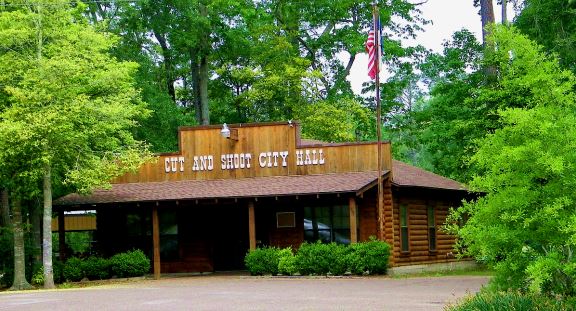That’s What it’s Called
By Gary Wright
“Names are not always what they seem.”—Mark Twain
The community of Tightsqueeze, Virginia got its name due to the construction of two buildings close to a road that connected the towns of Chatham and Danville in Pittsylvania County. In 1870, W. H. Colbert built his general store close enough to the road so that women could go straight from their carriages — parked in the road — to the store without getting muddy or dusty. Soon, another merchant, Isaiah Giles, built a blacksmith-wheelwright shop directly across the road from the general store. It, too, was on the road’s edge for convenience. Due to the closeness of the two buildings, buggies and wagons had to slow down as they passed between the two buildings. Thus, individuals were told to slow down for the “tight squeeze” where the two stores were located.

If you pronounce Fries, Virginia as “fries” in the vicinity of this quaint southwest Virginia community you would be wrong and soon corrected by the local citizens to pronounce it correctly as “freeze.” The town was named for North Carolina cotton mill owner Colonel Francis Henry Fries (“freeze.”) Located along the New River in Grayson County, it was incorporated in 1902 and, at its height, boasted a cotton mill, a hydro-electric dam, and a full-service company-owned town and it claimed “the world’s most sophisticated technology.” So full of promise at the outset but the last business closed in 1989 and the town is now unincorporated.
Sugar Tit, an unincorporated community located in Spartanburg County, South Carolina, received its name when the men spent so long socializing at the local general store, their wives complained they took to the store ‘like a baby to a sugar tit.’ There are no town or community signs to let you know you’re there. Pesky sign collectors constantly see to that. It is home to Sugar Tit Distillery and Sugar Tit Dairy Farms whose milk is advertised as the ‘sweetest milk around.’

Our Town, Alabama is an unincorporated community in Tallapoosa County, Alabama, United States. Its population was 641 as of the 2010 census. Our Town had its start around 1913 when the railroad was extended to that point. The community was named by John S. Jones by saying, “It’s not your town, or my town; it’s Our Town.”
Umpire, Arkansas (also called Busby) is an unincorporated community in Howard County, Arkansas. It has frequently been noted on lists of unusual place names. In the early 1890s Quiller Smith opened a new gristmill in the area. The community had heard of baseball but had never played the game. In honor of the new mill, Billy Faulkner, a local hero, organized a celebratory baseball game and served as umpire, after which Miss Flora Jones, a schoolteacher, addressed the crowd and suggested the name Umpire for the new post office in honor of the great umpiring by Billy Faulkner.
The motto of the town of Social Circle is “Georgia’s Greatest Little Town.” A city in Walton County, extending into Newton County, Georgia, it is located approximately 45 miles east of Atlanta. According to tradition, Social Circle was named from an incident in which a group of townspeople offered water to a weary traveler, who responded with delight, “This certainly is a social circle.”

Is Pain, Louisiana really a pain or is there another explanation? There is no recorded history of how it got its name but, since French is spoken throughout the state and ‘pain’ is the French word for bread, it is likely that it was so named because of the quality or quantity of bread baked there. I do hope it’s not the other obvious possibility.
D’Lo, Mississippi’s name was proposed as Millhaven but was rejected by the postal authorities for some unrecorded reason. The citizens came up with the new name “De Leau.” This name was submitted and approved by the Postmaster but was later shortened to just D’Lo. Although this story seemed far-fetched, the University of Southern Mississippi has proven that old maps from 16th-century French explorers show that they labeled the D’Lo area around the Strong River with the words “De l’eau sans potable” which roughly translates to ‘the water is not drinkable.’ It was later shortened to D’Lo. Strong River was named from the Choctaw words that meant ‘bitter tasting,’ which adds credence to that origin. The town was featured in Life magazine in 1944 or sending proportionally more men to serve in World War II than any other town of its size; 39 percent of the men who lived in D’Lo served in that war.
Difficult, Tennessee is an unincorporated community in Smith County. It lies just north of State Route 85, about halfway between Defeated to the south and Kempville to the east. Defeated Creek, a tributary of the Cumberland River, passes through the community. One version of the name’s origin holds that when residents applied for a post office, the application was returned because postal officials said that the name submitted was problematic. They told the town, “We suggest that your proposed name is difficult.” The townspeople took it as a mandate and proposed that very name.

Cut and Shoot, Texas is a municipality incorporated in 1969, located in eastern Montgomery County, Texas, about 40 miles north of Houston. Until 2006, Cut and Shoot was considered and called a “town.” Then, the town council elected for it to be considered and referred to as a “city.” Cut and Shoot was named after a 1912 community confrontation that almost led to violence. According to differing versions of the story, the origin of the dispute is murky at best. It was probably over the design of a new steeple for the town’s only church or who should be allowed to preach there.
Whatever the circumstances, a small boy at the scene became scared enough to want to depart the area. He reportedly declared “I’m going to cut around the corner and shoot through the bushes in a minute!” This statement apparently stayed in the residents’ minds and was eventually adopted as the town’s name.
All images from Google Images



Up in the mountains of western North Carolina in Madison County there were two little towns named Trust and Luck.
That’s great! Thanks for commenting, Bob.